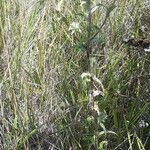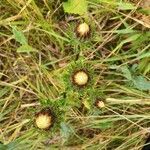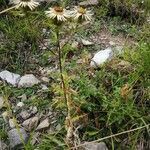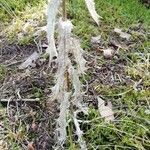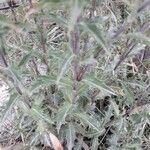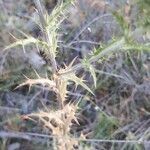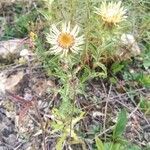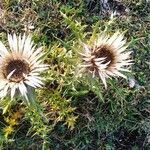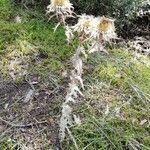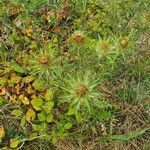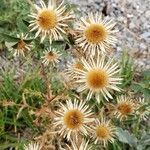A thistle herb that has a 2 year life-cycle. It grows 50 cm high and spreads 50 cm wide. The stem is erect and stiff. It has a purple tinge. The leaves in the first year are flat and strap like. They are hairy and have spines. The leaves in the second year are sword shaped and stiff with bristles. The edges are wavy. The leaves on the stem clasp the stem. The flowers are yellow with purple towards the centre. They are in clusters of 2-5. The fruit are cylinder shaped nutlets.
